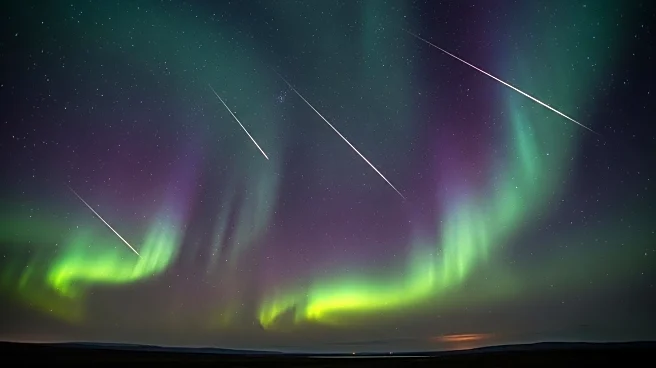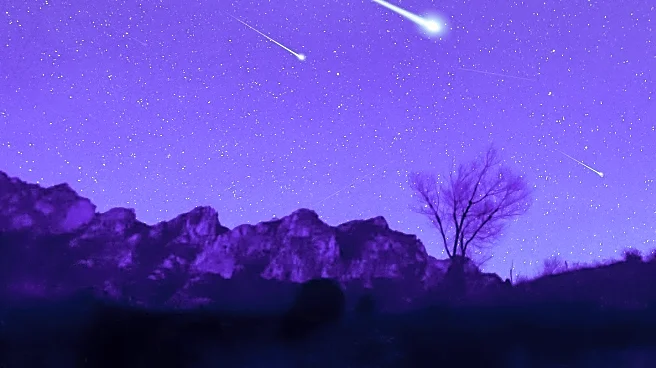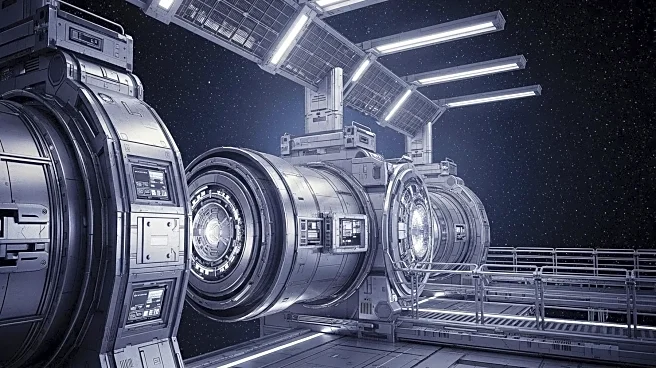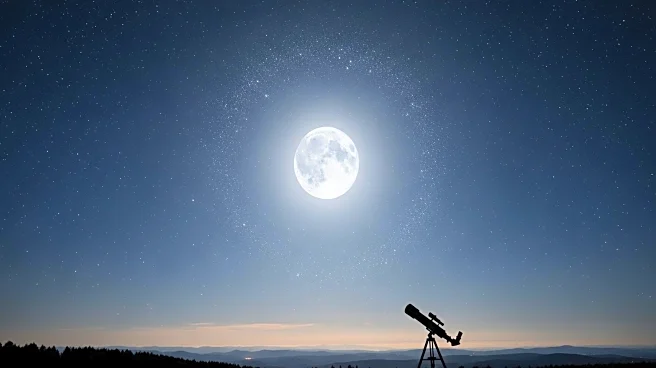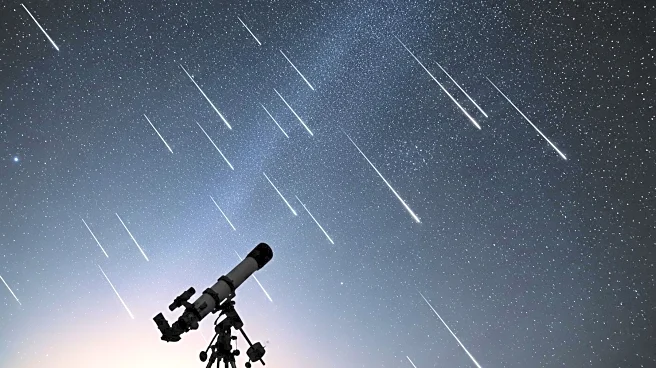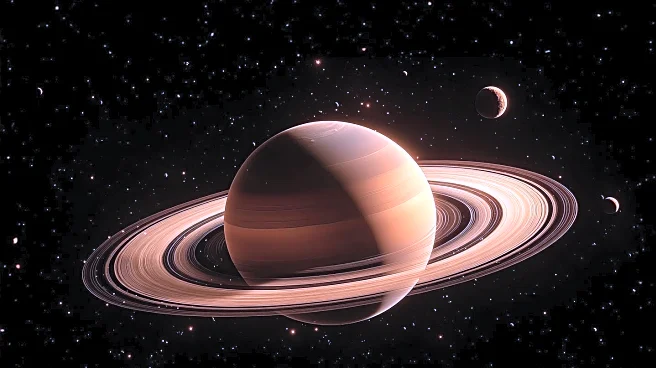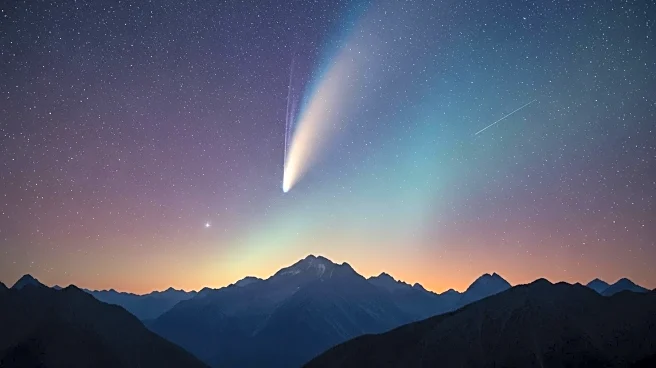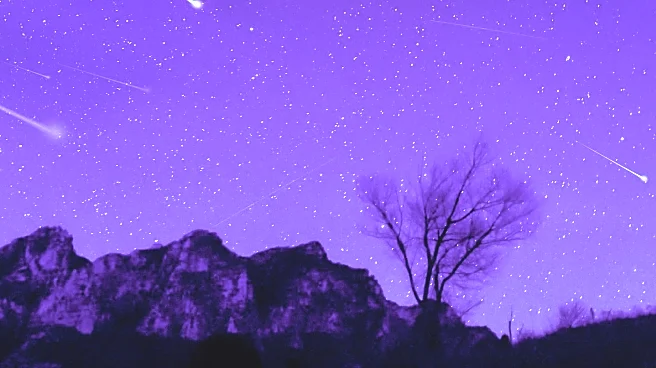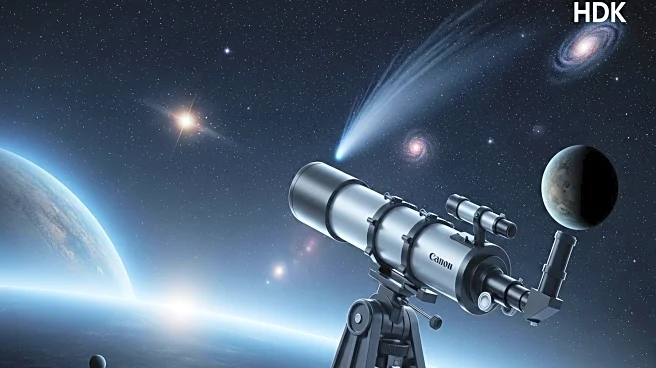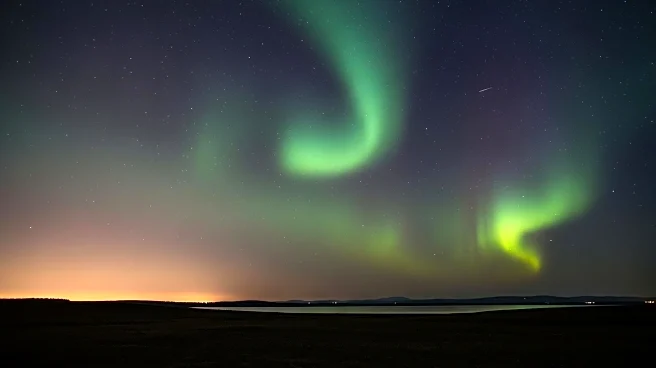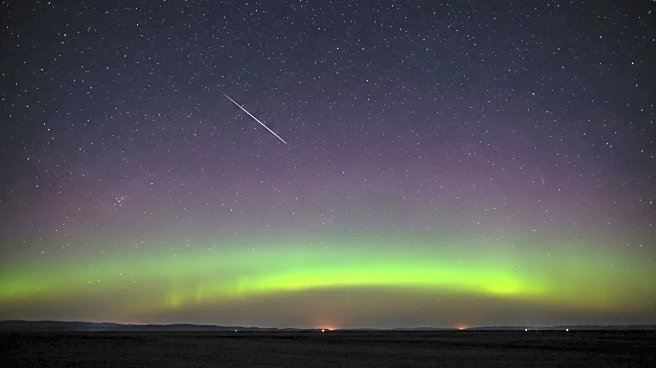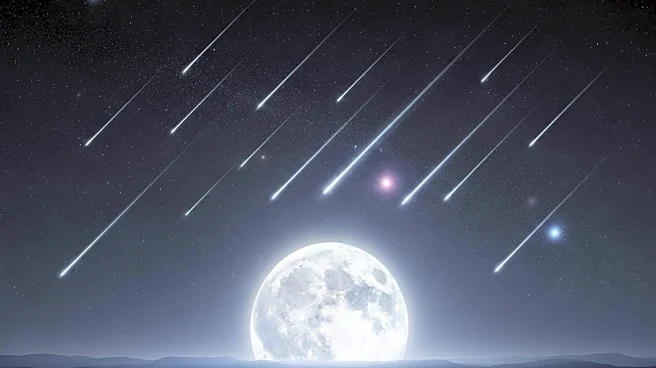What is the story about?
What's Happening?
NOAA space weather forecasters have issued a G2 (moderate) geomagnetic storm watch for October 1, 2025, predicting auroras at high latitudes. The storm is expected to subside by October 2, with conditions becoming mostly quiet or unsettled. Concurrently, two meteor showers, the Orionids and Southern Taurids, are active. The Orionids, originating from Halley’s Comet, will begin on October 2 and peak later in the month, while the Southern Taurids, known for bright fireballs, are already underway. Additionally, the International Space Station (ISS) will make several visible passes, and bright planets like Venus, Jupiter, and Saturn will be prominent in the night sky.
Why It's Important?
The geomagnetic storm and meteor showers present unique opportunities for skywatchers and scientists alike. Auroras resulting from the storm could provide stunning visual displays, particularly in high-latitude regions. Meteor showers offer a chance for amateur astronomers to observe celestial events, contributing to public interest in space science. The visibility of planets and the ISS enhances educational and observational opportunities, fostering a greater appreciation for astronomy. These events also highlight the importance of space weather forecasting in preparing for potential impacts on satellite operations and communication systems.
What's Next?
Skywatchers are advised to monitor updates from NOAA and use tools like NASA’s Spot the Station for ISS viewing times. The peak of the Orionids meteor shower later in October will coincide with a new moon, providing ideal dark sky conditions for observation. Continued monitoring of space weather conditions will be crucial for anticipating any further geomagnetic activity that could affect satellite communications and power grids.
AI Generated Content
Do you find this article useful?
